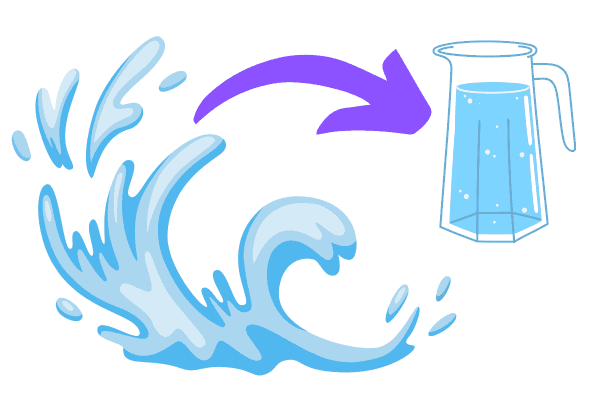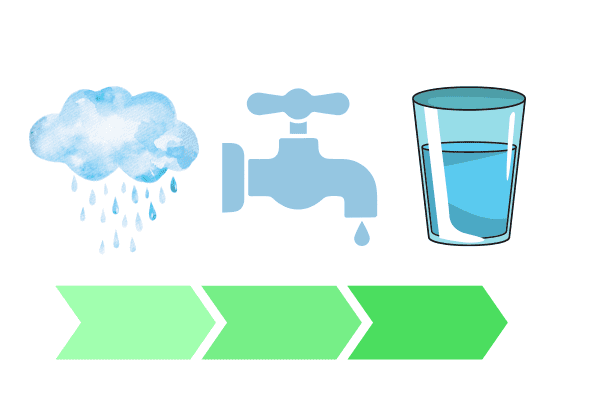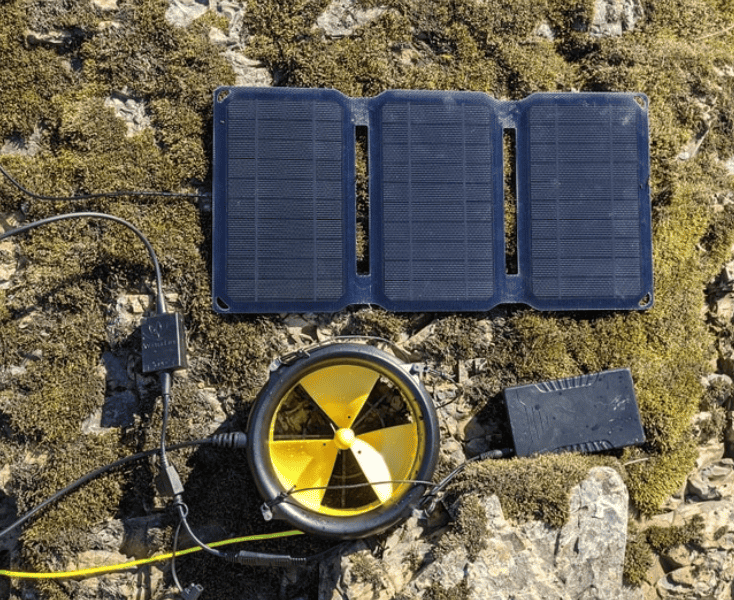Understanding Reverse Osmosis Desalination: A Comprehensive Guide
Demystifying Reverse Osmosis Desalination: Your Ultimate Guide
Have you ever wondered how we can turn salty seawater into drinkable fresh water? Welcome to the world of reverse osmosis desalination! This process, a real game-changer in the fight against global water scarcity, uses osmosis technology and semipermeable membranes. Developed over decades, it’s become a vital part of industries worldwide.

Understanding Reverse Osmosis Desalination: High osmotic pressure forces water through an RO membrane while leaving dissolved solids behind. But it’s not just about salt rejection – proper pretreatment and managing pressure drop are also crucial. So next time you enjoy some refreshing RO water or marvel at the workings of an osmosis plant, remember there’s more to this desalination process than meets the eye.
How Reverse Osmosis System Functions
Let’s dive straight into the nuts and bolts of how reverse osmosis systems work. No fluff, just facts.
The basic principle behind a reverse osmosis system is simple yet genius. It’s all about using pressure to force a solution through a semipermeable membrane. Imagine squeezing water through a sponge – that’s pretty much it!
The Semi-Permeable Membrane
The semipermeable membrane is like the bouncer at the club, deciding who gets in and who stays out. In RO systems, this membrane allows water molecules to pass through while blocking larger particles such as salts, minerals, and other impurities.

This process might seem slow (like waiting for your favorite song on an old cassette tape), but it’s incredibly effective. Think of it as nature’s filtration system—just supercharged!
Pressure-Driven Process
Reverse osmosis technology relies heavily on pressure. Without enough pressure, you’re not going anywhere fast! Natural osmosis creates a balance between two sides of a membrane. But we want to do the opposite; we want to unbalance things.
By applying pressure on one side (the salty or dirty side), we can push water molecules through the membrane to the other side (the clean side). This leaves us with pure water on one side and concentrated contaminants on the other.
Stages Involved
A typical reverse osmosis system has four main stages: pretreatment, pressurization, separation, and post-treatment.
- Pretreatment: This stage prepares the feedwater for desalination by removing larger sediments and chlorine that could damage the RO membrane.
- Pressurization: A high-pressure pump increases water pressure to overcome natural osmotic pressure.
- Separation: Here’s where the magic happens! The pressurized water passes through the RO membrane, where pure water is separated from contaminants.
- Post-Treatment: Lastly, some systems will treat this purified water further to adjust its pH or remove any remaining gases or odors.
So there you have it—a quick rundown of how an RO system turns undrinkable saltwater into fresh H2O!
Remember that not all reverse osmosis systems are created equal—some may have additional steps or features depending on their design or purpose!

In essence, reverse osmosis technology is like having your rain cloud in your kitchen tap—or wherever you need clean drinking water! Is it science at its most relaxed…or should I say at its most hydrated’?
Conversion of Seawater into Freshwater

Unmasking the Desalination Process
Imagine being thirsty in the middle of an ocean. You’re surrounded by water, but it’s not drinkable because it’s salty. That’s where reverse osmosis desalination comes into play. It’s a process that transforms seawater into freshwater, making it safe for human consumption and use.
Desalination works like a charm on seawater, brackish water, well water, and even wastewater. It kicks off with pretreatment stages to remove large particles from the feedwater. This is followed by pressure application to push the water through a semipermeable membrane infiltration.
The membrane acts like a bouncer at a nightclub – only allowing certain things to pass through. In this case, it lets water molecules slip by while blocking salt and other impurities. The result? Permeate water that’s clean and ready for your glass.
Ensuring Water Quality
But how can we be sure this purified water is safe? Well, stringent quality control measures are in place throughout the process.
Regular checks are conducted on the feedwater and permeate water to monitor their quality. Post-treatment procedures are implemented to balance pH levels and disinfect the potable water.
Think of these measures as your grandma double-checking your homework – they ensure everything is up to standard before reaching consumers’ taps.
Rate of Conversion
But let’s cut to the chase – how efficient is this conversion from seawater into freshwater?
Well, it depends on several factors, such as temperature and salinity levels of the feedwater. Generally speaking, reverse osmosis systems can convert around 30-50% of seawater input into potable output.
To put that in perspective: if you fed 10 liters of seawater into such a system, you’d get about 3-5 liters of fresh water out!
Factors Influencing Conversion Rates
Let’s dive deeper into those factors affecting the conversion rates I mentioned earlier.
Temperature plays a significant role since warmer waters pass more easily through membranes than colder ones (think trying to pour hot sugar-water syrup through a sieve compared to mean!). Salinity also impacts efficiency – higher salt content requires more energy for successful desalination.
So next time you sip on some clean tap water or enjoy softened shower water thanks to your home’s drain-water treatment system, remember there’s more than meets the eye behind every drop!
Operational Challenges and Performance Calculations
The Gritty Side of Scaling
Scaling, a joint technical difficulty in reverse osmosis desalination, is like the unwelcome house guest who overstays their welcome. It’s that stubborn build-up on your system that won’t budge. This mineral deposit can reduce the capacity of your system over time, making it less efficient.
Here’s how it works: scaling occurs when the concentration factor (the ratio of solute to solvent) increases beyond a certain point. It’s like adding too much sugar to your coffee; at some point, it just won’t dissolve anymore.
Measuring Up with Key Performance Indicators
So how do we know if our system is performing well? We use key performance indicators (KPIs), like report cards, for our systems. Some common KPIs include:
- Recovery rate: The amount of water produced compared to the total feed water.
- Salt rejection: How effectively the system removes salt from the water.
- Energy consumption: The amount of energy used per unit volume of water produced.
These KPIs are calculated using data collected during operation and can help identify potential issues before they become big problems.
Maintenance Matters
Like any complex machinery, reverse osmosis desalination systems require regular maintenance to keep them running smoothly. This includes routine cleaning to prevent fouling and scaling, replacing worn-out parts, and monitoring system performance.
Think about it this way – you wouldn’t wait until your car breaks down before taking it in for a service, right? The same goes for these systems.
Powering Through with Energy Efficiency
Energy consumption is a big deal in reverse osmosis desalination. It’s not just about saving money (although important) but also about reducing environmental impact. There are several ways to improve energy efficiency:
- Use high-efficiency pumps and motors.
- Recover waste energy from brine discharge.
- Optimize operational parameters such as pressure and flow rates.
Remember that old saying “waste not want not”? Well, that applies here too!
Environmental and Health Impacts Analysis
Brine Disposal’s Environmental Impact
Brine disposal, a byproduct of reverse osmosis desalination, has a significant environmental impact. It’s like throwing a house party that leaves the place trashed the next day – not cool! High salinity levels in brine can harm marine ecosystems, disrupting the balance of life underwater.
Let’s get into specifics:
- The increase in salt concentration can lead to hypoxia, causing marine species’ death.
- Heavy metals and other contaminants in brine can accumulate in aquatic organisms over time.
- The thermal effect caused by discharging warm brine into colder sea waters can also negatively impact marine life.
These points are worth considering when discussing desalination systems’ environmental impact.
Health Risks from Desalinated Water
Now let’s switch gears and talk about what happens at your office or home after you’ve got this desalinated water on tap. Some studies suggest that desalinated water may pose health risks due to its low mineral content. Our bodies need some aspects for optimal functioning, and stripping moisture of these essential minerals might leave us high and dry (pun intended).
Here’s what you should know:
- Desalinated water typically lacks minerals like calcium and magnesium, which are critical for human health.
- Consuming demineralized water over a prolonged period could potentially lead to mineral deficiencies.
The International Desalination Association (IDA) is all over it, so don’t sweat it too much.
Protecting Marine Ecosystems
Mitigating negative impacts on marine ecosystems is no small feat, but measures are being taken. Think MMF (Multi-stage Flash distillation), ED (Electrodialysis), or even something as simple as diluting brine before discharge.
Some steps include:
- Using advanced pretreatment processes to reduce waste.
- Developing innovative technologies for zero liquid discharge systems.
- Implementing strict regulatory standards for safe discharge.
These steps aim to minimize any potential environmental damage caused by brine disposal.
Regulatory Standards for Safe Discharge
Lastly, let’s chat about regulatory standards because they’re crucial in maintaining quality control – like bouncers at a club ensuring everyone behaves themselves! These standards ensure that discharged waste meets acceptable levels of contaminants before it hits our oceans.
Check out these key points:
- Most countries have specific guidelines set by environmental agencies to regulate brine disposal.
- Regular monitoring ensures compliance with these regulations.
Economic Factors and Renewable Energy Sources
Cost Analysis
From an economic perspective, let’s dive into how reverse osmosis desalination works. Like any other technology, it comes with its own set of costs. The initial investment can be pretty hefty, considering the advanced technologies involved. Operational expenses are another significant factor, which includes energy consumption and labor costs. Then there’s maintenance – a critical part of running this technology smoothly.
In comparison to other desalination methods, reverse osmosis might seem like a costly affair. But here’s the catch – while other techniques may have lower initial capital requirements, their operational and maintenance costs often surpass reverse osmosis.
Renewable Energy to Reduce Costs
So, is there a way to make this process more affordable? You bet! Enter renewable energy sources like solar or wind power. These sources provide a sustainable and cost-effective supply of energy for desalination plants. Imagine harnessing the sun’s power during peak hours to fuel the desalination process – that’s some serious savings on your electricity bill!
Developing countries could greatly benefit from this approach as many areas lack access to clean water but have abundant sunshine or wind resources at their disposal.
Future Trends
What does the future hold for reverse osmosis desalination? If current trends are anything to go by, it looks pretty promising! Technology advancements aim to make this process more cost-effective by improving energy recovery systems and reducing maintenance needs.

For instance, recent news showcased new membrane technologies that promise higher efficiency, and longer life spans than traditional ones. This product innovation could potentially lower both operational costs and initial capital expenditure.
Moreover, several nations worldwide are investing in research to reduce these expenses further while maximizing benefits for people living in water-scarce regions.
These advancements aren’t just about saving money; they’re about improving lives in developing countries where water scarcity poses significant challenges. It’s proof that when we use our resources wisely and invest in sustainable technologies, we can make a real difference in people’s lives.
Assessing Reverse Osmosis Effectiveness
Reverse osmosis is a popular desalination technology, but how do we gauge its effectiveness? Several criteria come into play.
Output Quality
Firstly, the quality of the permeate (the purified water) is a significant factor. Reverse osmosis aims to remove unwanted substances from water, so the fewer impurities in the final product, the better. If you’re getting a high-quality permeate with minimal contaminants, that indicates a top-notch reverse osmosis system.
Energy Efficiency
Next up: energy efficiency. Desalination can be quite power-hungry – especially compared to other methods of obtaining fresh water. So, if a reverse osmosis system can produce clean water without guzzling too much energy, it gets extra brownie points for being eco-friendly and cost-effective.
Comparison with Alternatives
But how does reverse osmosis stack up against alternative desalination technologies? Well, let’s take distillation as an example:
- Distillation requires heat to evaporate water before condensing it back into liquid form. This makes it more energy-intensive than reverse osmosis.
- Conversely, distillation can handle highly saline or contaminated waters better than reverse osmosis.
So while each method has pros and cons, there’s no one-size-fits-all solution.
Technological Advancements
Over time, technological advancements have played a significant role in boosting the effectiveness of reverse osmosis systems. Innovations like improved membrane materials and energy recovery devices have made these systems more efficient and reliable.
To see this in action, look at places like California or Israel, where large-scale desalination plants use reverse osmosis technology to churn out billions of fresh water yearly. These real-world applications demonstrate how effective this method can be when implemented correctly.
Case Study: Rosarito Desalination Plant Experience
Background of Operations
The Rosarito desalination plant, a prime example of how reverse osmosis desalination works, is one of the largest desalination plants in the western hemisphere. Nestled in Baja, California, Mexico, it’s designed to produce 100 million gallons of freshwater daily from seawater.
Challenges and Solutions
No pain, no gain! The plant faced its fair share of challenges—high energy costs. Reverse osmosis is a power-hungry process. To tackle this, they implemented energy recovery devices that recycle up to 98% of the hydraulic energy.
Another hurdle? The brine discharge affects marine life. Their solution was as innovative as it was effective – diffuser technology that dilutes the brine before releasing it into the ocean.
Lessons Learned
So what can we take away from Rosarito’s experience? A couple of things:
- Energy efficiency is king in desalination.
- Environmental impact mitigation isn’t optional; it’s necessary.
These lessons apply to other desalination plants and resource extraction or waste management industries.
Success Metrics
How do we measure success? Let’s look at some numbers:
- Freshwater production: 100 million gallons/day
- Energy recovery: Up to 98%
- Brine dilution: Achieved safe levels for marine life
That’s not all, though! With this blue case study, they’ve also set an example for future projects on how reverse osmosis desalination works and how to make it work efficiently and sustainably.
In short, the Rosarito Desalination Plant has shown us that with innovation and careful planning, we can turn our oceans into sustainable sources of freshwater without harming marine ecosystems or burning holes in our pockets with high energy costs.
Conclusion on Reverse Osmosis in Sea World Water Desalination
This isn’t rocket science. Reverse osmosis desalination has been a game-changer, turning salty seawater into freshwater we can drink and use. Sure, it has challenges – performance calculations can be a headache, and environmental and health impacts must be considered.
But let’s not forget the upsides. It’s cost-effective (especially with renewable energy sources in the mix) and practical overall. The Rosarito Desalination Plant is living proof of that. So don’t just take my word for it – do your research, weigh the pros and cons, and see if reverse osmosis desalination could work for you.
FAQs – Understanding Reverse Osmosis Desalination
What are the operational challenges of reverse osmosis desalination?
The main challenges include maintaining system efficiency, managing brine disposal safely, preventing membrane fouling, and ensuring reliable power supply.
How does reverse osmosis convert seawater into freshwater?
It uses pressure to force seawater through a semipermeable membrane that removes salts and other impurities.
Is reverse osmosis desalination environmentally friendly?
There are environmental concerns related to energy consumption and brine disposal. However, using renewable energy sources can reduce the carbon footprint significantly.
How effective is reverse osmosis in sea world water desalination?
It’s highly effective at removing salts and other contaminants from seawater. The Rosarito Desalination Plant case study demonstrates this effectiveness.
Are there any health risks associated with drinking water produced by reverse osmosis?
Reverse osmosis effectively removes harmful substances from water. However, it also removes beneficial minerals that need replenishment for optimal health benefits.
Remember, folks: Knowledge is power! Do your homework before making decisions about water treatment solutions like this one.
Final Thoughts
Understanding Reverse Osmosis (RO) Desalination begins with understanding the basic process of RO itself. Reverse osmosis is a water purification technology that uses semi-permeable RO membranes to remove impurities from water.
This water system design is applied on a larger scale in RO plants to convert seawater into freshwater, known as seawater desalination. Given the high levels of dissolved salts in seawater, using RO technologies in desalination has been a game-changer for islands and coastal regions where freshwater sources are limited.
The RO unit operates under high pressure, pushing seawater through the thin film composite membranes. This results in two output streams: the product water (also known as permeate flow), which has passed through the membrane, and the concentrate stream (also known as brine solution), which contains the impurities and salts rejected by the membrane.
The mass balance equation is essential in the operation of an RO plant. It balances the amount of water entering the system (feed water) with the water exiting it (product water and concentrate). As a general rule, feed water chemistry, membrane surface characteristics, and pressure all impact the rate of permeate flow and the amount of salts and impurities that pass the RO membranes, also known as the salt passage.
In the first stage of a multi-stage RO system, the seawater is pre-treated with filters and a water softener to remove elements that might damage the RO membranes or reduce their performance. The pre-treatment typically involves PP (polypropylene) cartridges to filter out larger particulates and a GAC (Granulated Activated Carbon) bed to remove organic compounds.
Post-treatment or remineralization is required to make the RO water palatable and safe for consumption. The reverse osmosis water produced by the desalination process is almost pure and lacks the minerals the human body needs. Remineralization involves adding necessary minerals back into the product water.
The product water is usually stored in a storage tank before distribution, while the concentrate is often returned to the sea. However, it’s important to note that care must be taken to ensure that the concentrated solution does not harm the local environment.
A notable example of RO desalination is the Rainman Watermaker, widely used in the Caribbean, specifically the British Virgin Islands. Organizations such as the United Nations have recognized these systems’ easy installation and potential to provide a stable water supply.
To wrap up, RO desalination represents a viable solution for regions with limited freshwater resources. Despite challenges such as concentrating disposal, changes in feed water chemistry, and ensuring solubility limits are within acceptable parameters, RO desalination is a critical technology providing water security to islands and coastal communities worldwide.
As our water sources change due to climate change and pollution, adequate water purification methods, such as Reverse Osmosis (RO), are becoming increasingly essential. RO desalination is particularly important for islands and arid regions where freshwater is scarce, and the primary water source is the sea or hard water from groundwater.
A reverse osmosis membrane forces water under high pressure through thin-film composite RO membranes. These membranes allow water molecules to pass while blocking most dissolved salts and impurities. In an RO system, water from the source (seawater or hard groundwater) is first filtered to remove solids. This water then goes through a high-pressure pump into pressure vessels containing the RO membranes.
The process is typically done in stages. In the first pass, reverse osmosis plant, the water goes through the membranes once. The water that passes through the membranes called the permeate, is collected, while the concentrate, the water containing the rejected salts and impurities, is usually drained away.
In some systems, there is a second pass RO where the permeate from the first pass is processed again for further purification. This might be necessary when the source water has a very high salt content or when the permeate is used for sensitive applications like in a pool or for drinking.
The purified water can then be remineralized and used as a source for bottled water, distributed to households, or supplied to an entire island. A ‘whole house’ RO system can provide purified water for all uses in a home, from cooking and drinking to bathing and laundry.
But, like any other online service, RO plants need security services to protect them from online attacks. This is particularly important when networked computers control or monitor the systems. If compromised, the water quality could be affected, or the entire system could shut down.
Companies like Aqua, with its headquarters in New York (tel. available on request or via their website and post office box for mail communication), specialize in providing such RO systems and services. They often offer a GAC bed, or Granulated Activated Carbon bed, as part of their system to remove chlorine and organic compounds from the water before it passes through the RO membrane.
In an illustrative comparison, if you were to try to separate sugar from sugar water, RO would be the process allowing the water molecules to pass through a membrane while leaving the sugar behind. This is essentially how an RO system works but on a much larger and more complex scale.
In conclusion, RO desalination is a highly effective method for providing clean water, particularly in areas with limited freshwater sources. Its ability to remove salts and impurities makes it an essential tool in the global effort to ensure safe, accessible drinking water for all.






